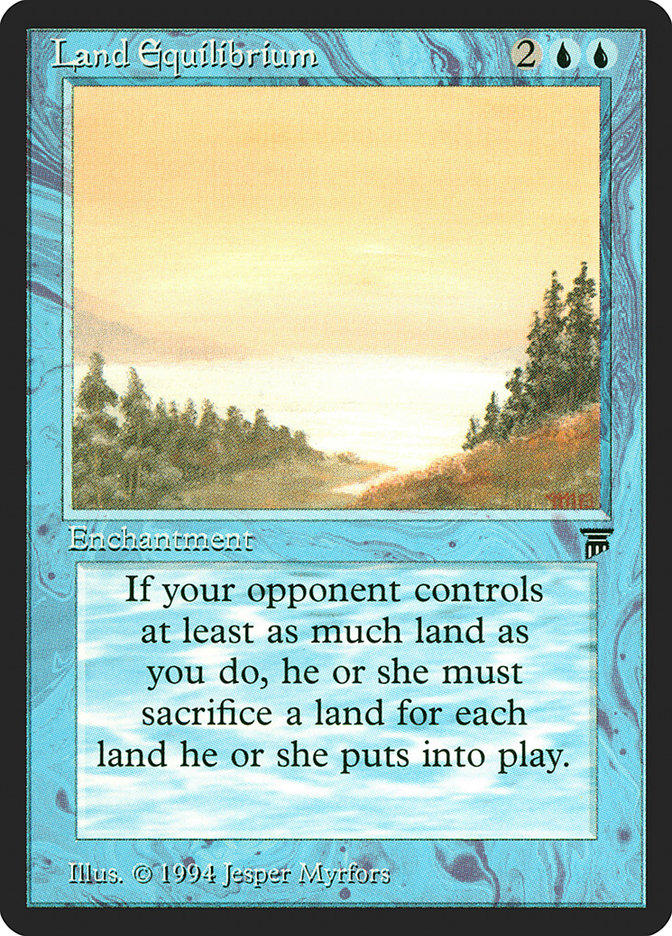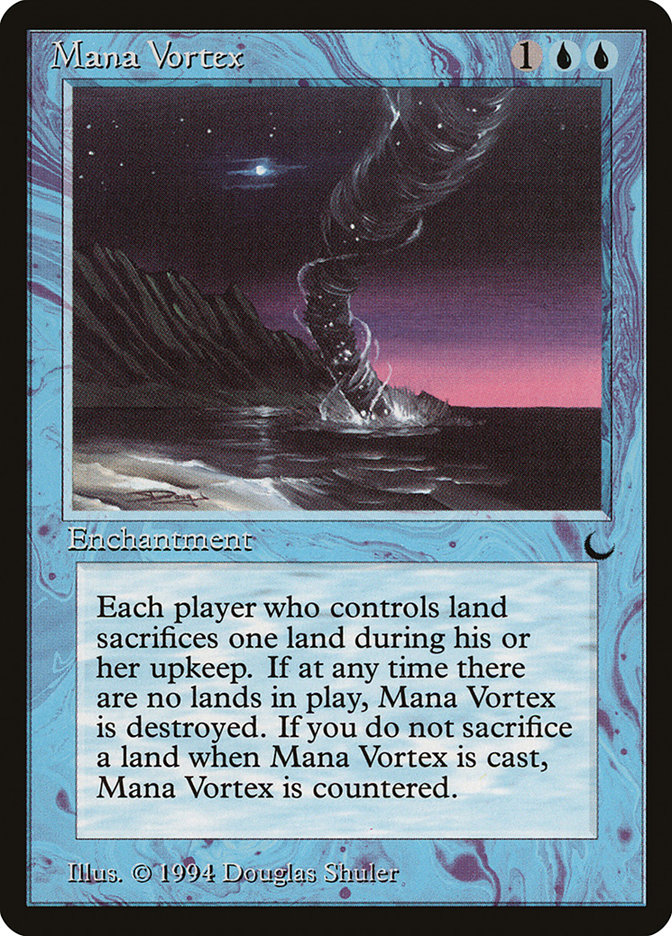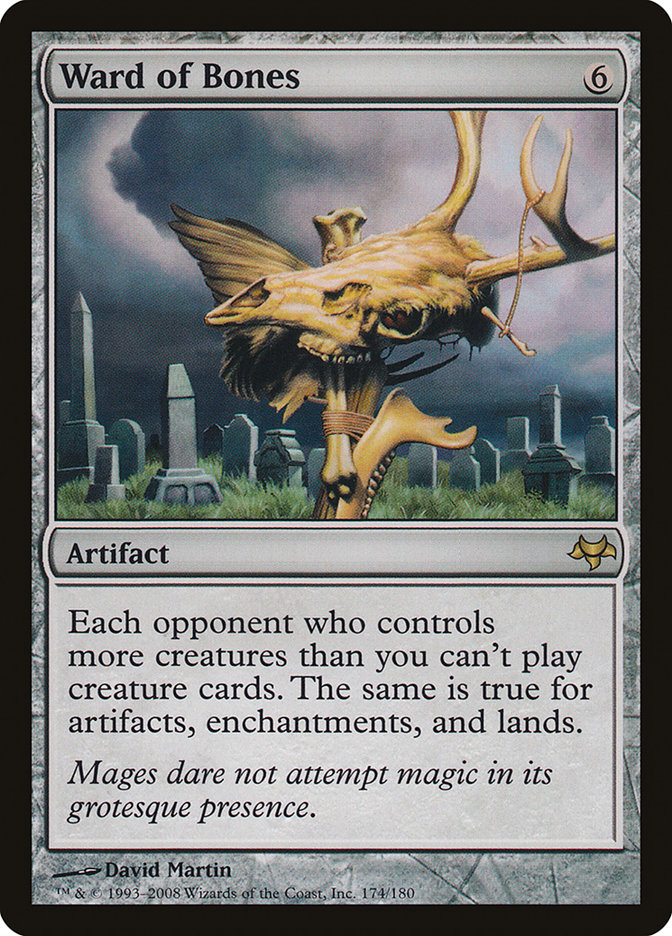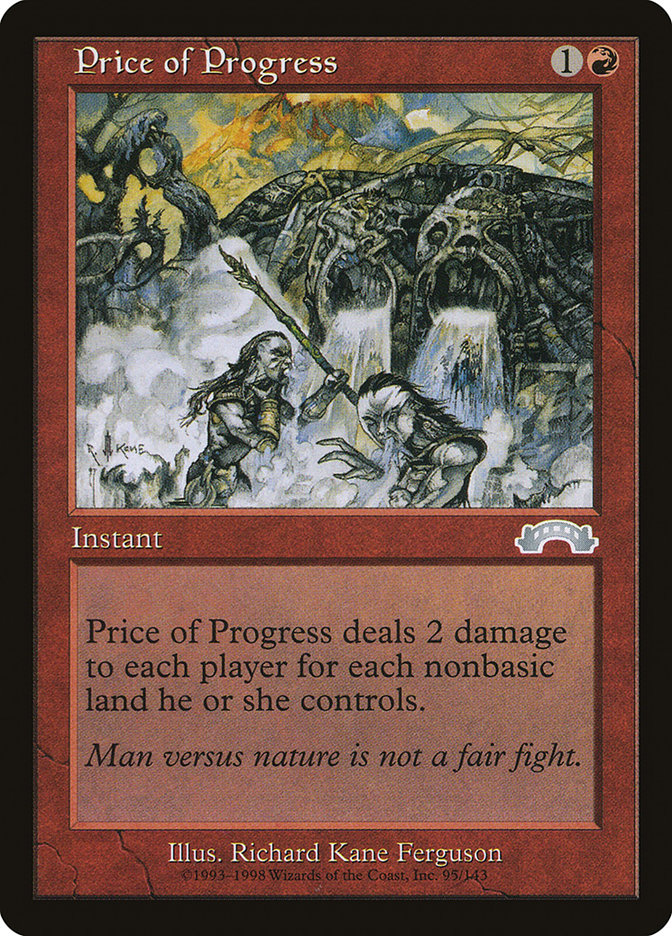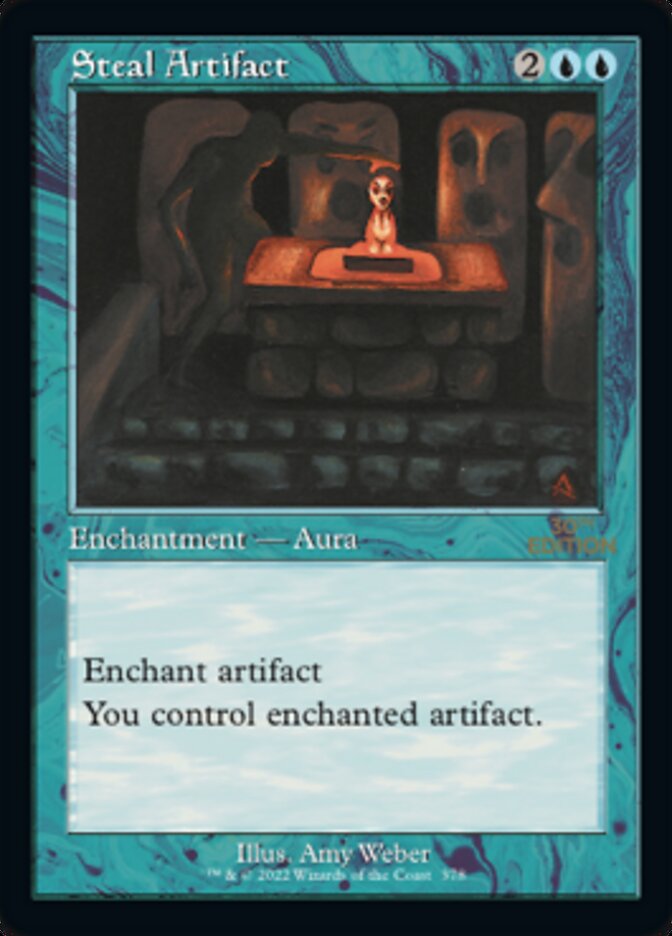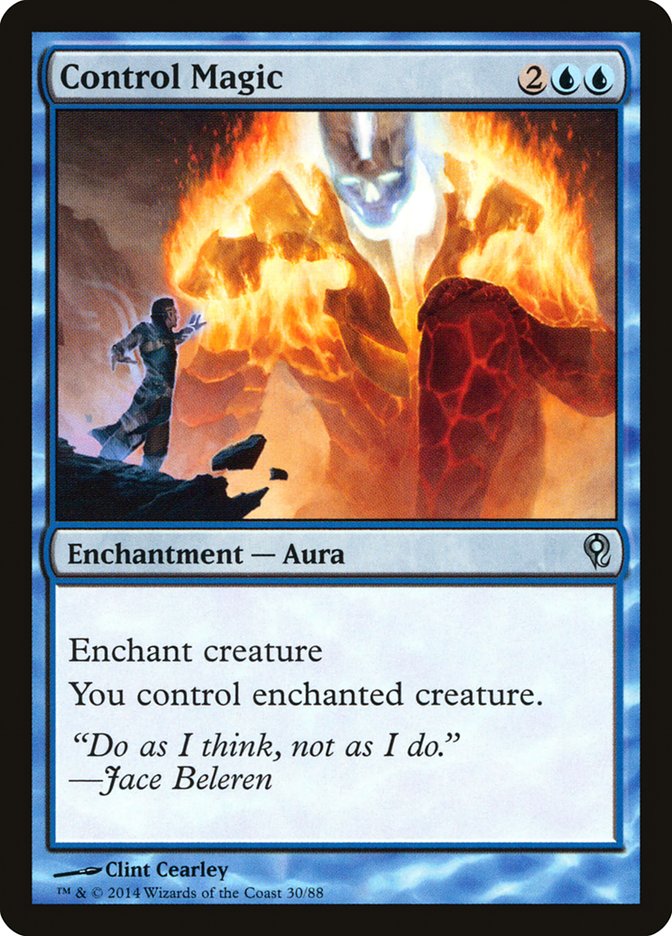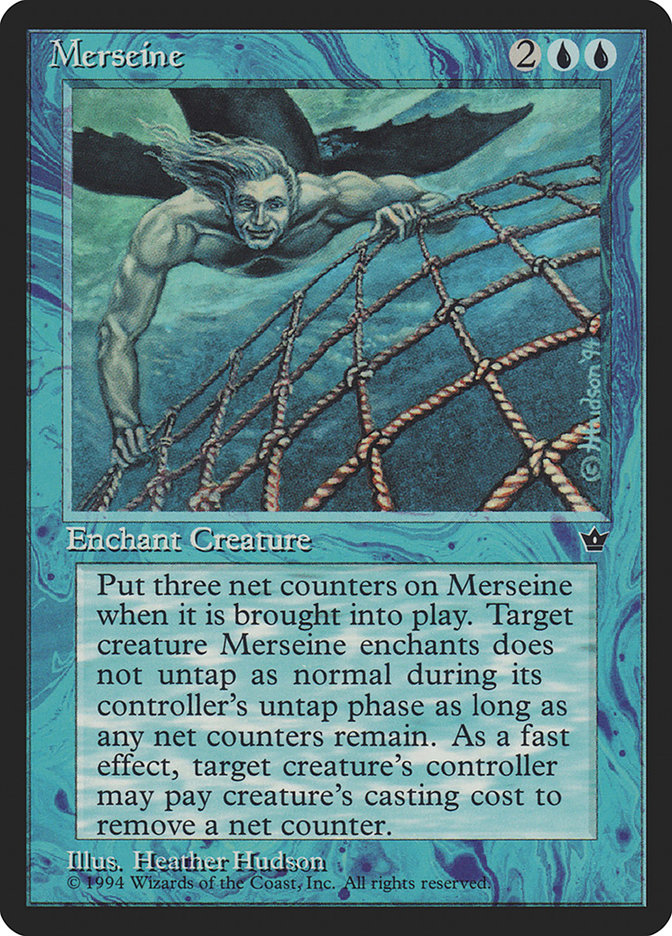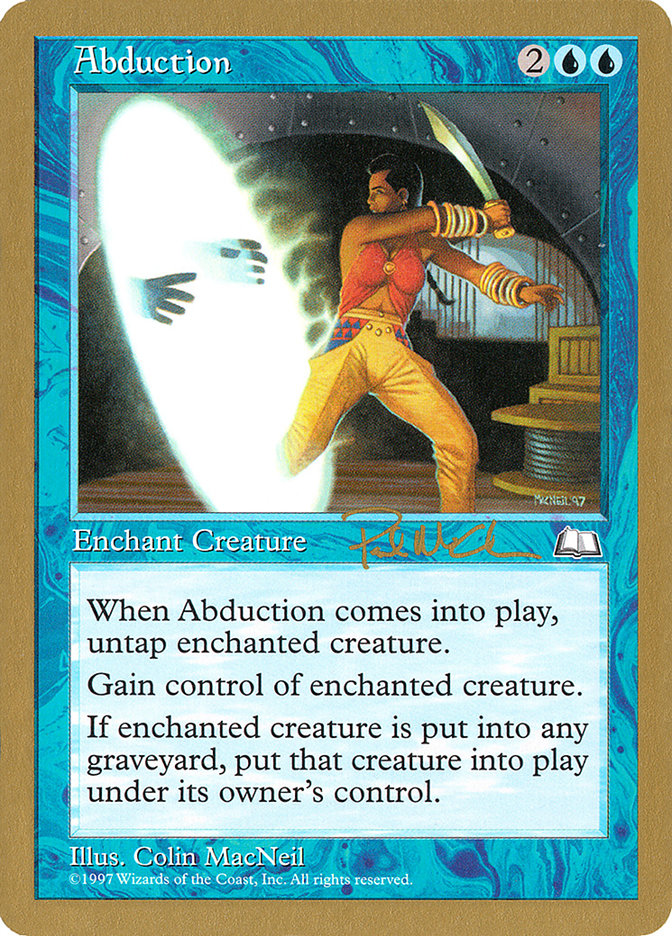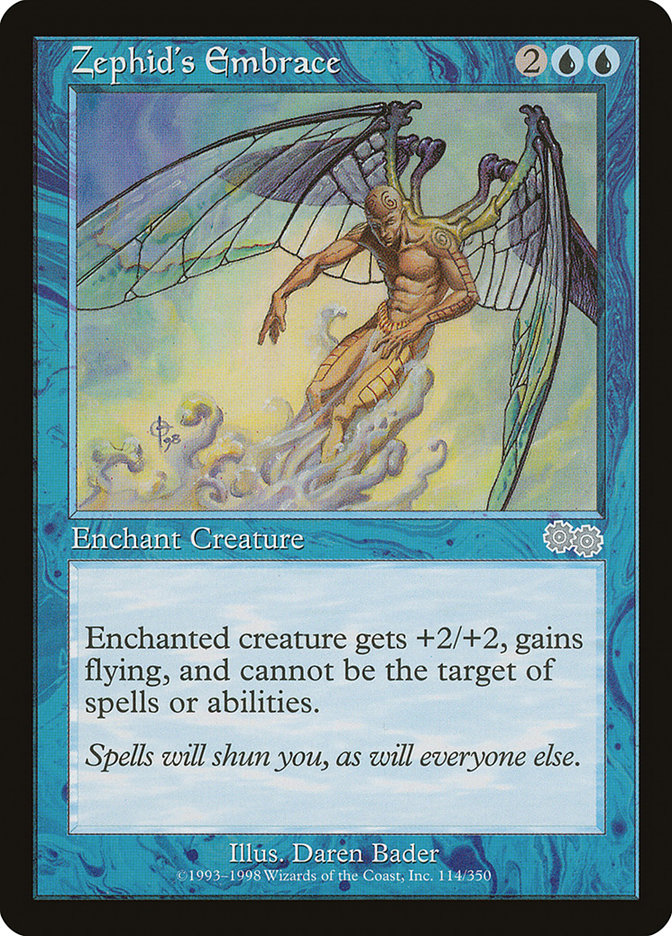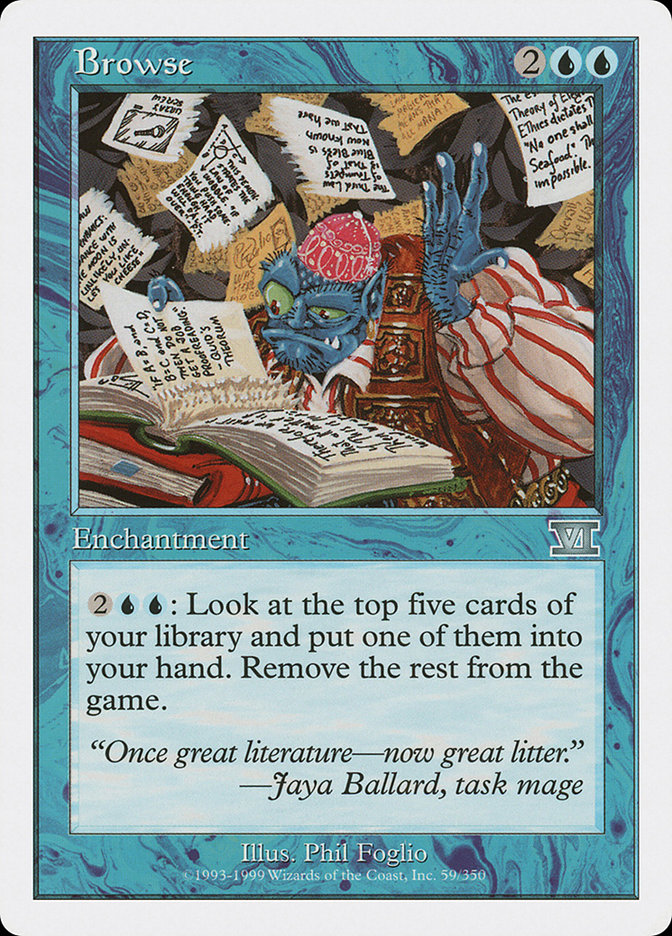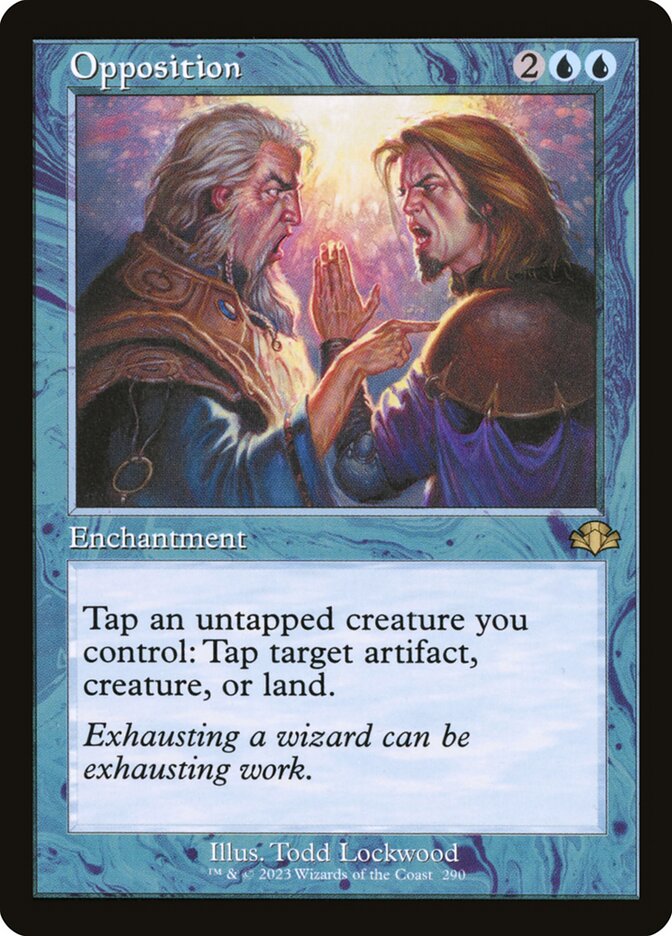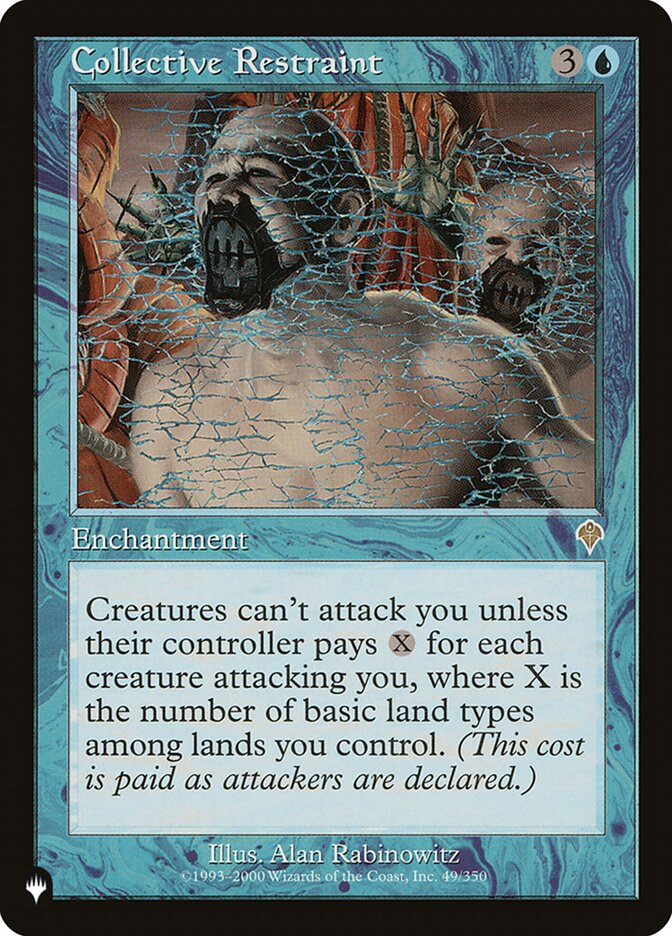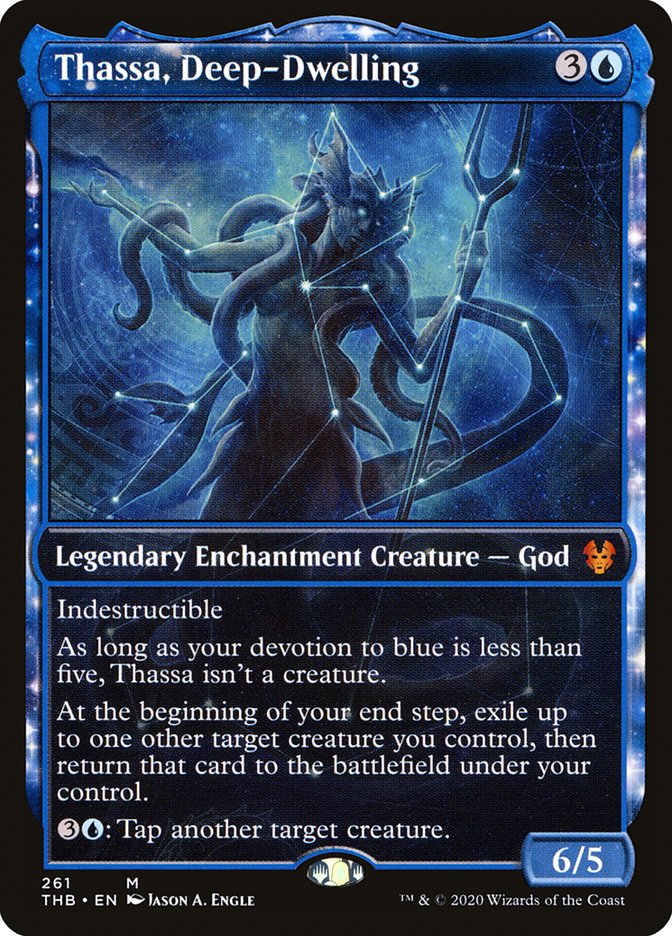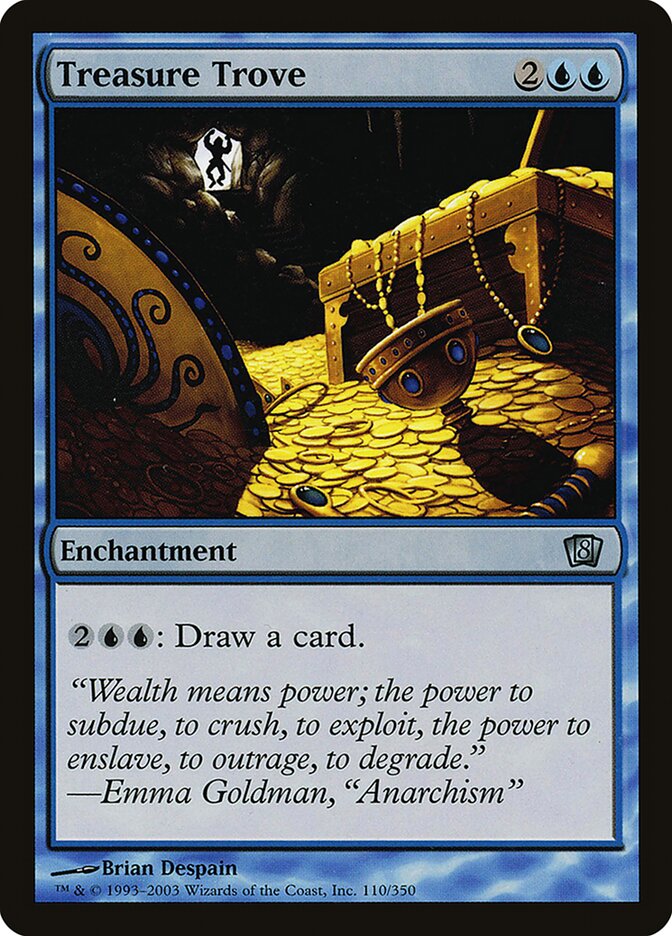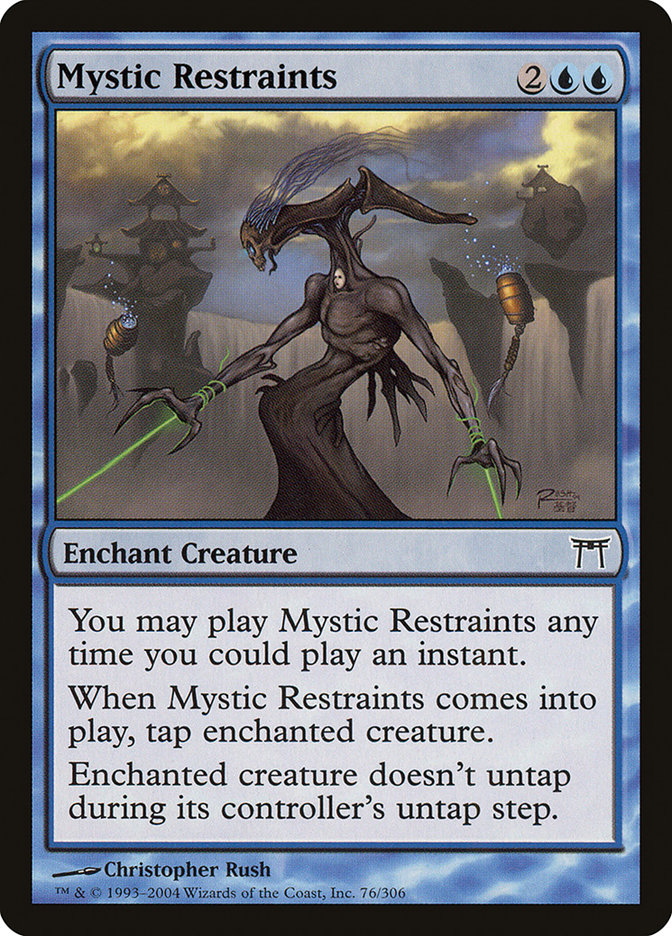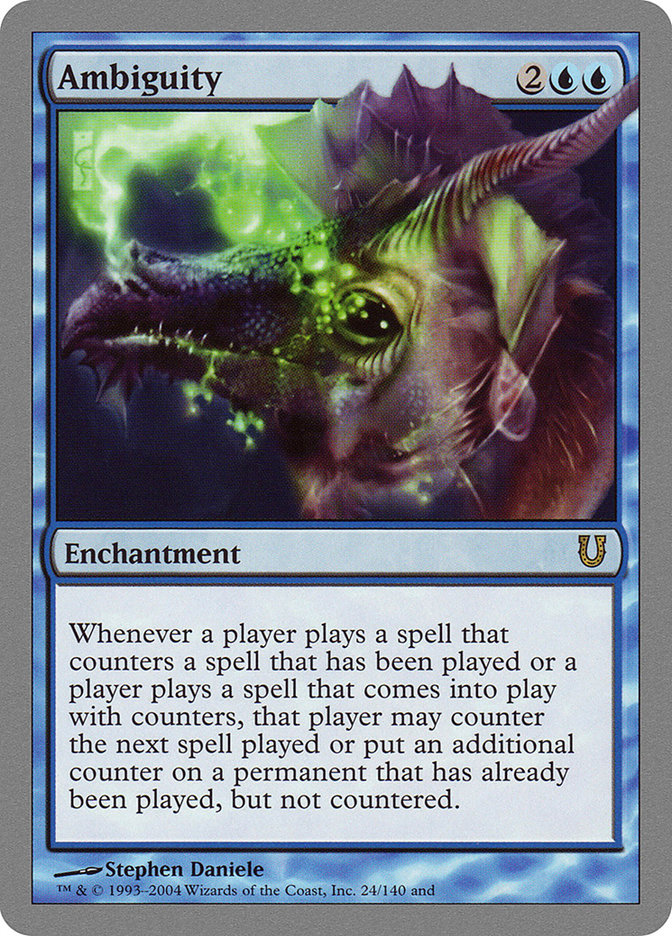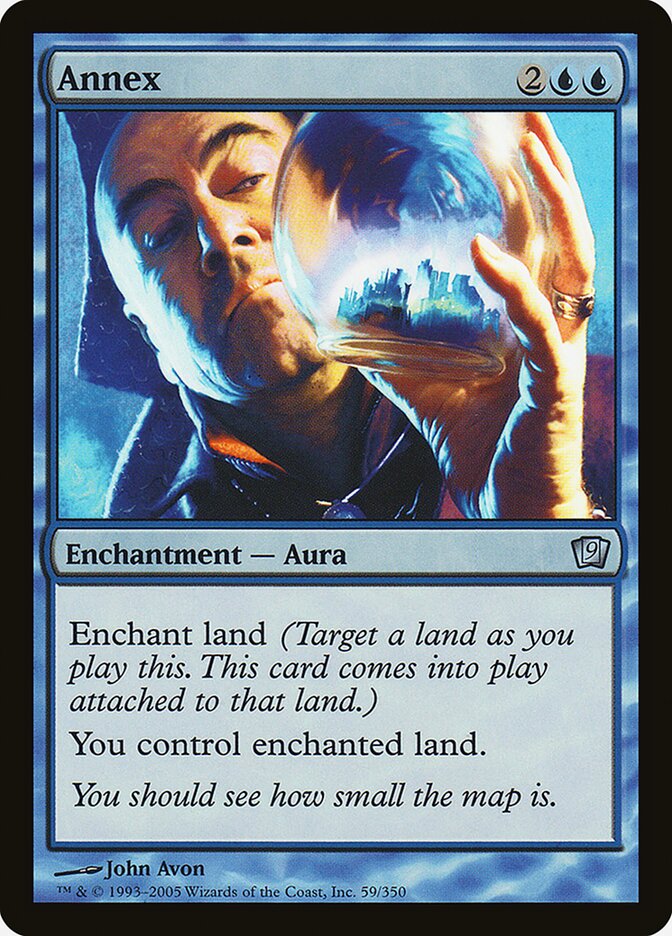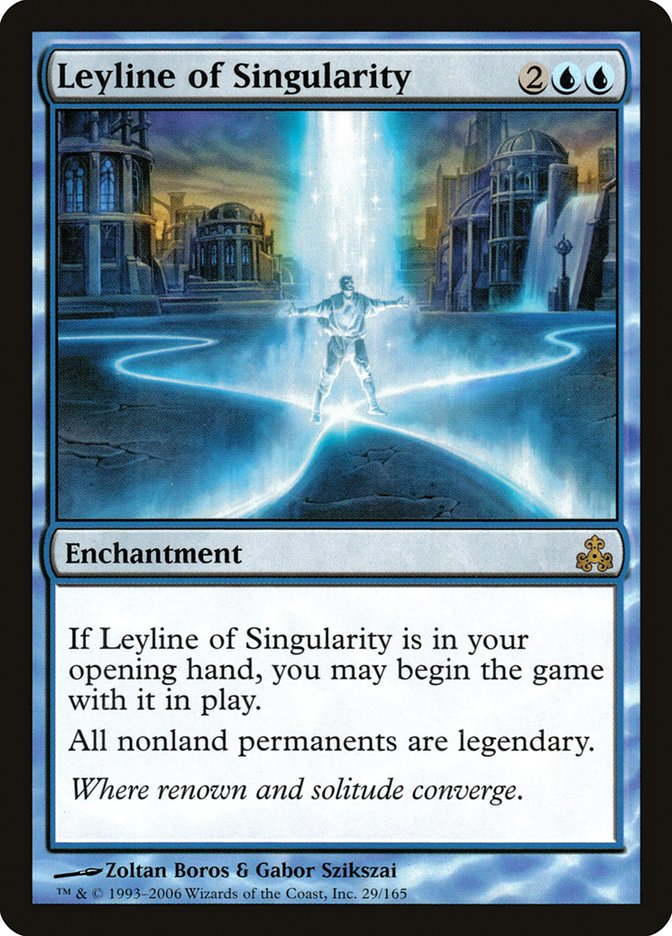Land Equilibrium MTG Card
| Card sets | Released in 2 setsSee all |
| Mana cost | |
| Converted mana cost | 4 |
| Rarity | Rare |
| Type | Enchantment |
Text of card
If your opponent controls at least as much land as you do, he or she must sacrifice a land for each land he or she puts into play.
Cards like Land Equilibrium
Land Equilibrium is a venerable offering in Magic: The Gathering that stands out within the annals of control strategies. It finds its peers in cards like Mana Vortex, which shares the concept of restricting land resources. However, unlike Mana Vortex, Land Equilibrium doesn’t destroy land but prevents players from playing land cards if they control more than you, a more subtle yet profound and ongoing restriction.
Another card that echoes the land control theme is Ward of Bones. This artifact also controls opponents’ ability to outpace you in terms of land, as well as creatures, artifacts, enchantments, and planeswalkers. While its effect is broader, it comes with a higher casting cost. On another note, Price of Progress punishes players for nonbasic lands, dealing damage rather than providing land play control. Although the approach is different, it comes from a similar playbook of leveling the playing field by targeting land bases.
These comparisons demonstrate that Land Equilibrium holds a unique position in MTG, offering a strategic advantage that can continuously hamper opponents’ development without directly removing their resources, making it a powerful and enduring tool for control decks.
Cards similar to Land Equilibrium by color, type and mana cost
Card Pros
Card Advantage: Playing Land Equilibrium can equate to having a card advantage by effectively countering your opponent’s ability to ramp up their land base, thus restricting their future plays and allowing you to capitalize on other strategies.
Resource Acceleration: While Land Equilibrium doesn’t directly accelerate your resources, it ensures a balance in land resources between you and your opponents. This means that if you’re ahead in land count, you can maintain that advantage without worry of being overtaken.
Instant Speed: Land Equilibrium works at the speed of the game’s rules – as soon as your opponent puts a land onto the battlefield that would give them more than you, it triggers. Its reactive nature allows you to operate your own game plan without having to dedicate resources to activate it or wait for a sorcery-speed window.
Card Cons
Discard Requirement: While Land Equilibrium doesn’t directly ask for a discard, it can indirectly cause you to discard cards if you’re unable to play lands. This is especially true when the card is in play and you’re holding onto multiple lands that you cannot put onto the battlefield, effectively stagnating your hand.
Specific Mana Cost: This card commands a specific mana composition, primarily blue, which narrows its utility to decks that run this color. If your deck isn’t centered around blue mana or doesn’t have the means to generate it, incorporating Land Equilibrium into your strategy can be challenging.
Comparatively High Mana Cost: With a casting cost of three blue mana and one of any color, Land Equilibrium is a significant investment, particularly for an enchantment with a somewhat narrow effect. It competes for space in your mana curve with other impactful four-mana spells that may offer immediate board presence or card advantage.
Reasons to Include Land Equilibrium in Your Collection
Versatility: Land Equilibrium is a distinctive card capable of finding a home in various strategies that aim to control the pace of the game. It can seamlessly integrate with deck types that benefit from land count manipulation or denial strategies, making it a valuable tool for keeping opponents’ land development in check.
Combo Potential: Within combo-centric decks, Land Equilibrium offers the opportunity to lock out opponents by pairing it with cards that bounce or destroy lands. This creates a scenario where opponents struggle to retain a significant presence on the board, tilting the scales in your favor as the game progresses.
Meta-Relevance: As the meta oscillates, having a card like Land Equilibrium can prove invaluable in environments saturated with ramp strategies. It provides a unique method to hinder opponents who rely heavily on land-based acceleration, ensuring your collection stays competitive as the landscape of the game shifts and morphs over time.
How to beat
Land Equilibrium is a powerful card in MTG that can fundamentally alter the flow of the game by restraining opponents from playing additional lands if they already control more than you. This can be a difficult obstacle to overcome. However, one of the effective strategies to circumvent Land Equilibrium is utilizing low-cost creatures and spells to reduce your dependency on land drops. Another tactic is incorporating artifact-based mana sources that aren’t affected by the card’s restriction or employing land destruction to equalize the land count and mitigate its impact.
Enchantment removal is also crucial—cards such as Disenchant or Naturalize can remove Land Equilibrium from the battlefield and restore the natural land play progression. In games with multiple players, forming temporary alliances might be necessary to collectively address the threat posed by Land Equilibrium. Anticipating its arrival and keeping mana open for an instant speed response can significantly reduce its effectiveness. Employing these strategies can help tip the balance of the game back in favor by nullifying the card’s disruptive ability.
Ultimately, while Land Equilibrium can be daunting, an adaptable game plan and keen awareness of your removal options can defuse its control and allow you to reclaim command of your land plays and overall strategy.
Where to buy
If you're looking to purchase Land Equilibrium MTG card by a specific set like Legends and Masters Edition III, there are several reliable options to consider. One of the primary sources is your local game store, where you can often find booster packs, individual cards, and preconstructed decks from current and some past sets. They often offer the added benefit of a community where you can trade with other players.
For a broader inventory, particularly of older sets, online marketplaces like TCGPlayer, Card Kingdom and Card Market offer extensive selections and allow you to search for cards from specific sets. Larger e-commerce platforms like eBay and Amazon also have listings from various sellers, which can be a good place to look for sealed product and rare finds.
Additionally, Magic’s official site often has a store locator and retailer lists for finding Wizards of the Coast licensed products. Remember to check for authenticity and the condition of the cards when purchasing, especially from individual sellers on larger marketplaces.
Below is a list of some store websites where you can buy the Land Equilibrium and other MTG cards:
 BUY NOW
BUY NOW BurnMana is an official partner of TCGPlayer
- eBay
- Card Kingdom
- Card Market
- Star City Games
- CoolStuffInc
- MTG Mint Card
- Hareruya
- Troll and Toad
- ABU Games
- Card Hoarder Magic Online
- MTGO Traders Magic Online
See MTG Products
Printings
The Land Equilibrium Magic the Gathering card was released in 2 different sets between 1994-06-01 and 2009-09-07. Illustrated by Jesper Myrfors.
| # | Released | Name | Code | Symbol | Number | Frame | Layout | Border | Artist |
|---|---|---|---|---|---|---|---|---|---|
| 1 | 1994-06-01 | Legends | LEG | 64 | 1993 | Normal | Black | Jesper Myrfors | |
| 2 | 2009-09-07 | Masters Edition III | ME3 | 40 | 1997 | Normal | Black | Jesper Myrfors |
Legalities
Magic the Gathering formats where Land Equilibrium has restrictions
| Format | Legality |
|---|---|
| Oldschool | Legal |
| Commander | Legal |
| Legacy | Legal |
| Oathbreaker | Legal |
| Vintage | Legal |
| Duel | Legal |
| Predh | Legal |
Rules and information
The reference guide for Magic: The Gathering Land Equilibrium card rulings provides official rulings, any errata issued, as well as a record of all the functional modifications that have occurred.
| Date | Text |
|---|---|
| 2009-10-01 | If a land that would enter the battlefield has its own “If -his land] would enter the battlefield” replacement effect, the player who will control that land chooses which replacement effect to apply. After applying one, if the other one would still be applicable, it’s then applied. |
| 2009-10-01 | If an opponent puts a land onto the battlefield under their own control, they may sacrifice that same land. The player won’t be able to tap that land for mana before sacrificing it. |
| 2009-10-01 | This effect applies no matter how the land would enter the battlefield: because an opponent plays it, or because a spell or ability allows that opponent to put it onto the battlefield. Note that it doesn’t matter whose control the land enters the battlefield under. If the opponent would put the land onto the battlefield under someone else’s control (as a result of Yavimaya Dryad’s ability, for example), that opponent will still have to sacrifice a land. |
